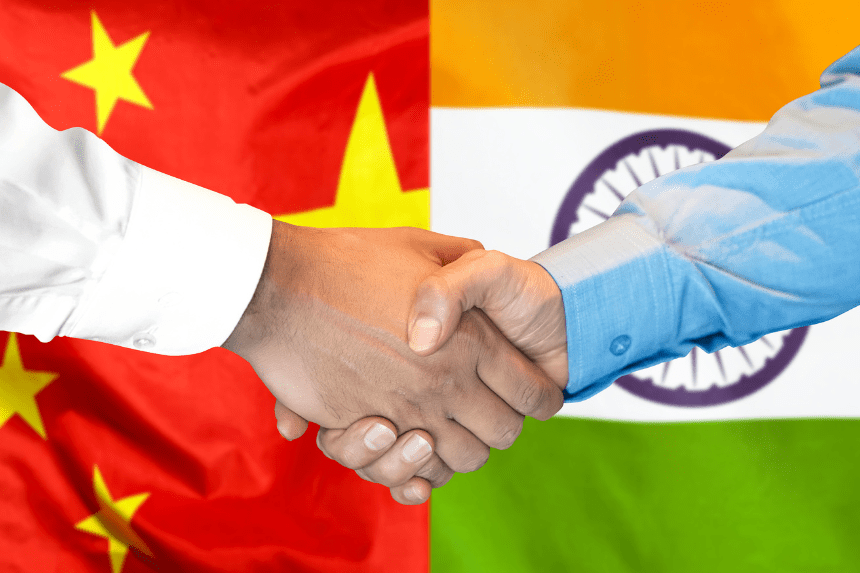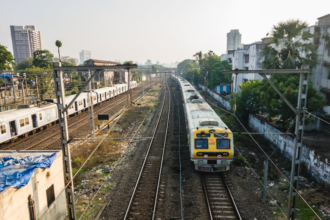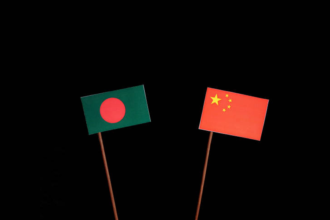Prime Minister Narendra Modi discussed India’s relationship with long-standing foe China in a recent interview favorably. He said that the disputed India-China border was once more in line with normalcy and urged closer bilateral cooperation. Given the great tensions resulting from the lethal 2020 border skirmish in Ladakh, the biggest conflict since the 1962 war, these comments are arresting. The geopolitical scene of Asia is still shaped by the changing India-China relations.
- Are India and China already on a road toward closer ties?
- What main obstacles exist in India-China relations?
- Which are the main markers of future relations?
- How might regional and global developments affect ties?
- Will the US Factor Affect India’s Approach to China?
- How might personal ties shape the future?
- What Future India-China Relations Hold?
Chinese Foreign Ministry spokesman Mao Ning appreciated Modi’s remarks, emphasizing that “the two countries should be partners that contribute to each other’s success. “
Are India and China already on a road toward closer ties?
Given current developments in India-China relations, Modi’s demand for closer ties is not as shocking as it would seem. With China regularly ranking as India’s top trade partner, bilateral trade has stayed robust despite continuous tensions. Both countries work in multilateral venues, including the Asian Infrastructure Investment Bank and BRICS. They also have interests in advancing non-Western economic models, opposing Islamist terrorism, and challenging what they see as Western moral imperialism.
High-level military talks persisted even after the Ladakh conflict drove relations to their lowest point in decades. With both sides consenting to restore border patrols, these negotiations produced a breakthrough in October 2023. Modi visited Chinese President Xi Jinping at a BRICS conference in Russia that same month, pledging further cooperation. India and China decided in January 2024 to restore direct flights between the two nations, hence strengthening their relations.
Furthermore, cultural and educational interactions between the two countries are growing. Chinese companies are exhibiting fresh interest in India’s technology and startup industries as more Indian students seek higher degrees in Chinese colleges. These events point to a more general attempt at peacemaking.
What main obstacles exist in India-China relations?
Even with these encouraging improvements, several long-standing problems still strain India-China ties. While China is firmly linked with Pakistan, India keeps close security links with the United States. Beijing also opposes India’s policy in the disputed Kashmir area and inhibits New Delhi’s admission into powerful international organizations such as the UN Security Council and the Nuclear Suppliers Group.
Another issue of concern for India is China’s increasing naval presence, notably with its sole overseas military station at Djibouti. Still a divisive topic, the Belt and Road Initiative (BRI) has been unequivocally rejected by India since it has passed over territory claimed by India. India has been fostering closer relations with Taiwan and keeping the Dalai Lama, a separatist leader Beijing sees in-house.
India’s defense alliances throw more complexity on the relationship. The country is in negotiations to sell supersonic missiles to Southeast Asian nations, which could be used to counter China in the South China Sea. China also sees India’s participation in venues like the Middle East-Europe Economic Corridor and the Indo-Pacific Quad as part of a more general strategy for containment of its power.
The trade disparity between the two nations presents even another major obstacle. India has a $85 billion trade deficit with China, and Chinese goods rule Indian marketplaces even with appeals for economic self-reliance. Though efforts to lessen this reliance have been gradual, Chinese investments remain vital for India’s infrastructure and technological industries.
Which are the main markers of future relations?
Many elements will define the India-China ties course in the next years:
1. Wonders if more border agreements will be reached.
More confidence-building actions concerning the disputed border will be the most important sign of development. Although the Ladakh conflict seriously tarnished confidence, the latest accord on border security was a positive move. Any more steps taken to reduce tensions would be much appreciated for bilateral ties.
2. Will Xi and Modi Meet Once More?
The shape of relations in the future will depend heavily on high-level diplomacy. Both Modi and Xi value personal involvement very much. Should they meet this year—at summits like BRICS in July, the G20 in November, or the Shanghai Cooperation Organization (SCO) later on—it would confirm recent successes.
3. Will Chinese investment in India rise?
From manufacturing to renewable energy, a rise in Chinese investment might help India balance its trade imbalance and give vital funding for Indian businesses. More robust commercial cooperation would also generate incentives to stop more geopolitical disputes.
With enterprises looking at fintech, e-commerce, and electric cars, Chinese businesses are especially interested in India’s digital economy. Still, security-related restrictions on Chinese technology companies remain a barrier to more economic involvement.
How might regional and global developments affect ties?
Four of India’s neighbors—Bangladesh, the Maldives, Nepal, and Sri Lanka—recently chose leaders more in line with China than their predecessors. These countries have, nevertheless, kept a balance between Beijing and New Delhi. Should this tendency continue, India’s worries about China’s regional impact could lessen.
Another thing to observe is China’s interaction with Russia. Beijing has strengthened its alliance with Moscow since the conflict in Ukraine, but should the war be called off, Russia might rely less on China. This might change China’s geopolitical calculations and create paths for stronger ties to India.
India is also expanding its interaction with African and Southeast Asian countries, areas where China has always had a great impact. If India is successful in developing closer security and economic alliances in these spheres, it may balance China’s regional hegemony.
Will the US Factor Affect India’s Approach to China?
One cannot overlook the role the United States plays in India-China ties. Should former US President Donald Trump—who has shown a readiness to relax tensions with China—resume office, India could have to rethink its stance. A lowering of US-China hostilities could lessen India’s influence against Beijing.
Furthermore, if Trump imposes reciprocal tariffs that affect India—considering the 10% tariff difference between the two nations—New Delhi might seek closer business relations with Beijing to help offset economic difficulties.
Moreover, India’s participation in the Quad alliance (which comprises Australia, Japan, and the US) still causes great sensitivity in its interactions with China. While China sees the Quad as an attempt to curb its influence, India sees it as a way to bolster its security interests. Any changes in the US-India strategic alliance can impact the whole India-China balance.
How might personal ties shape the future?
Beyond political and financial concerns, India and China are increasingly engaging in cultural and educational interactions. Thousands of Indian students still study at Chinese universities, particularly in the medical and engineering domains. China has also been growing interested in Indian culture, yoga, and Bollywood movies.
Encouragement of increased cross-border academic, tourist, and business cooperation between both countries could help to establish confidence at a local level. Though it is sometimes disregarded, this feature of India-China ties is very important in determining the long-term stability between the two nations.
What Future India-China Relations Hold?
The two biggest countries in Asia, India, and China, are natural rivals, but their relationship is complicated. Although underlying conflicts still exist, recent encouraging events point to more possible stability. The next months will show whether Modi’s conciliatory remarks are a first step toward sincere rapprochement or only diplomatic bluster.
The future of India-China relations will ultimately depend on both nations’ capacity to negotiate their disagreements through diplomacy, communication, and mutual economic cooperation.








